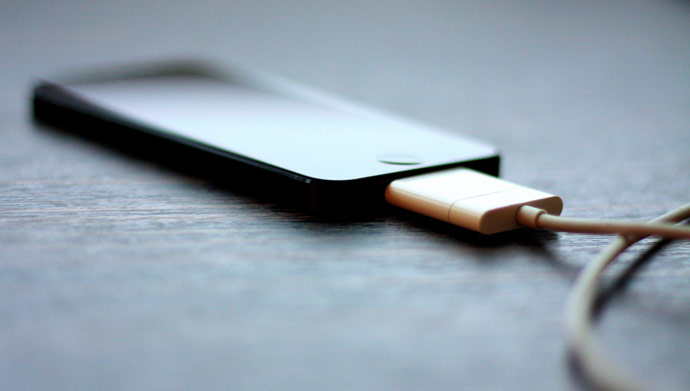Could Your iPhone Be Using More Energy Than Your Fridge?

Image via Flickr/ Phil Roeder
According to a recent study by technology investment-advisory group, Digital Power Group, your iPhone uses more power than your fridge.
According to the study, “The Cloud Begins With Coal: Big Data, Big Networks, Big Infrastructure and Big Power,” streaming an hour of video to your smartphone or tablet consumes more electricity in remote networks than “two new refrigerators use in a year.” And iPhone-5 users download more data than any other smartphone users.
In layman’s terms: a new refrigerator uses on average 322 kilowatt-hours of energy each year. An iPhone, on the other hand, averages 361 kilowatt-hours of annual energy consumption, most of which is used to power the phone’s data centers and supply a steady stream of data for your consumption.
According to the executive summary of the 45-page study, the world’s communication-technology ecosystem alone uses about 1,500 terawatt-hours of electricity each year—equal to the overall consumption of Japan and Germany combined and the amount of global electricity usage in 1985. In reference, just one terawatt-hour of energy can power 90,000 homes for a full year. The communication-technology ecosystem, in fact, accounts for 10 percent of global energy consumption. And as more and more of the population subscribes to smartphones, the authors predict hourly Internet traffic will one day exceed annual Internet traffic at the turn of the millennium. And by 2035: “the cloud” will require only slightly less energy than all the lights around the globe.
The use of coal seems to be the key indicator of energy absorption, and Apple, being one of the largest and dominant tech companies, gets the finger pointed at it as a result.
Coal’s dominance arises from the importance of keeping costs down while providing ever-greater quantities of energy to the growing economies, and as the IEA recently noted, the absence of cost-effective alternatives at the scales the world needs,” study authors wrote.
And it doesn’t help that streaming just a few hours of video to an iPhone has a larger carbon footprint than burning the same video to DVD and shipping it across the country.
According to Apple’s website, however, the tech giant continues its progress towards 100-percent renewable energy. In 2010, the company reached 35-percent renewable energy, and by 2012 it saw a 110-percent increase to 75-percent renewable energy.
In a rebuttal to the study, Fortune made some relevant points, stating that iPhones weren’t the culprit of absorbing the amount of energy that ultimately affects the environment. Fortune referred to another 2012 study by the Electric Power Research Institute that found the cost of keeping an iPhone 5 charged for a year was about 41 cents.
Who do you believe?









































